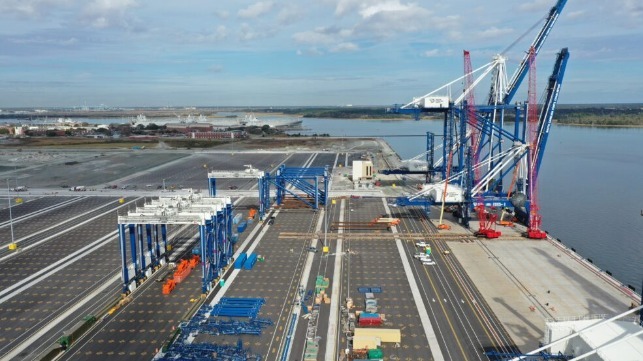Ports Call for U.S. to Reverse Course Saying Equipment Tariffs Delay Growth

The American Association of Port Authorities quickly responded to last week’s proposed revisions by the U.S. Trade Representative to the port fee program. It said the new tariffs will only serve to delay port modernization and expansion in the United States without encouraging the reshoring of equipment manufacturing.
AAPA, which represents public port authorities, has been fighting the proposed fees on Chinese-manufactured cranes since the accusations first emerged a few years ago that China could use the cranes to spy on American ports and potentially interrupt port operations. The group supports the efforts to restore manufacturing in the United States, but says the fees must be tied to incentives to restart domestic manufacturing. It notes that there are still minimal or no options for ports other than the Chinese manufacturers.
“AAPA remains opposed to the 100 percent tariff, which will only make cranes delivered from allied nations more expensive. There is still not a single American producer of STS cranes,” said AAPA President and CEO Cary Davis.
The group highlights one small concession from the Trump administration, in the tariffs on Chinese-manufactured ship-to-shore cranes. AAPA fought against making the fees retroactive to existing equipment orders and says it appreciates that the Trump administration has not applied the tariff to cranes ordered before the publication of the USTR’s Section 301 ruling on China’s shipbuilding and maritime industry, which includes the tariffs on cranes. The 100 percent tariff went into effect with the port fees on October 14, but it is not retroactive to orders placed before April 2025, as long as the equipment is delivered by April 2027.
The USTR, however, in the revisions to the program released on October 10, proposed adding a new 150 percent tariff on a broad range of cargo handling equipment from China. This includes gantry cranes, reach stackers, terminal tractors, and other critical equipment. The group asserts that by effectively pricing out these equipment types for U.S. ports, the tariffs mean ports will delay expansion and modernization plans for years.
“AAPA supports efforts to bring maritime industry manufacturing back to America. However, these ill-advised trade policy changes will cause America’s ports to slow modernization and fall further behind competitors, when the maritime industry has emerged as a key focus of national and economic security,” the group writes in a statement in response to the USTR.
It contends that the increase in the cost of equipment will have to be offset elsewhere in the ports’ operations. It suggests expenses will have to be lowered by steps such as by reducing workforce training or capital investment.
AAPA is urging the Trump administration to “reverse course on these tariffs.” It is calling for support for efforts such as targeted tax credits and funding for port infrastructure, while also creating incentives for domestic production of STS cranes and other cargo handling equipment.
The USTR is taking comments through November 12 on the changes to the fee program, including the proposed fees on cargo handling equipment. The goal is to finalize those portions of the fees to go into effect in December 2025.
